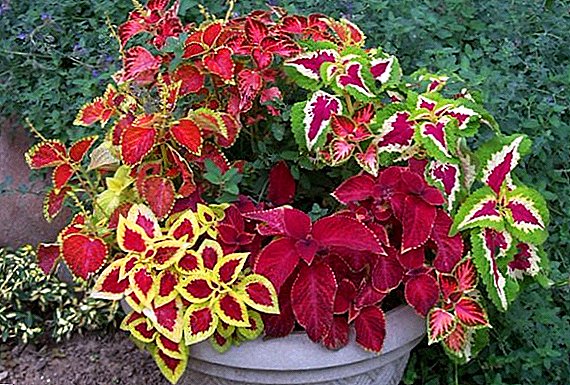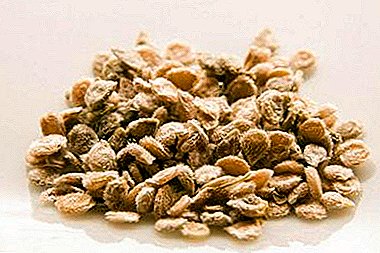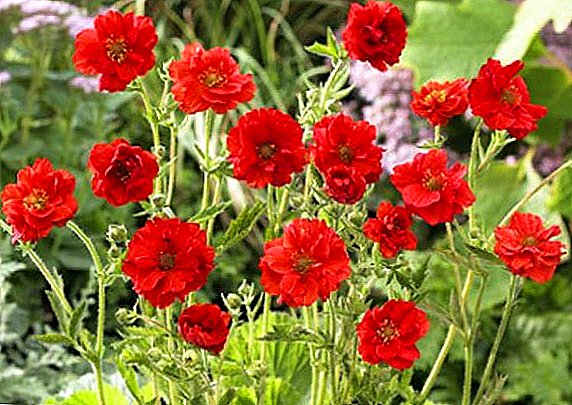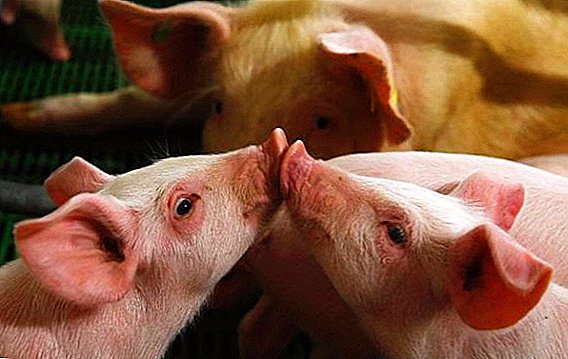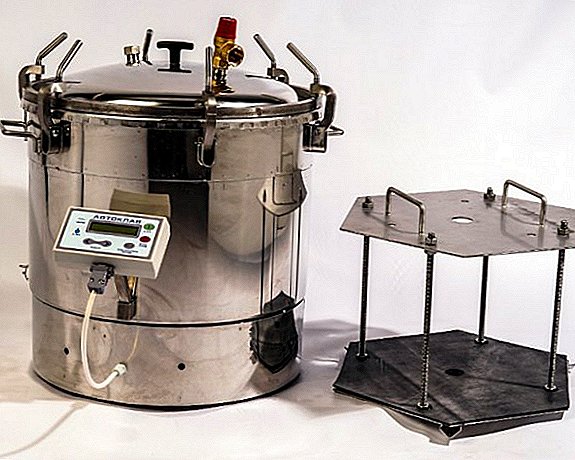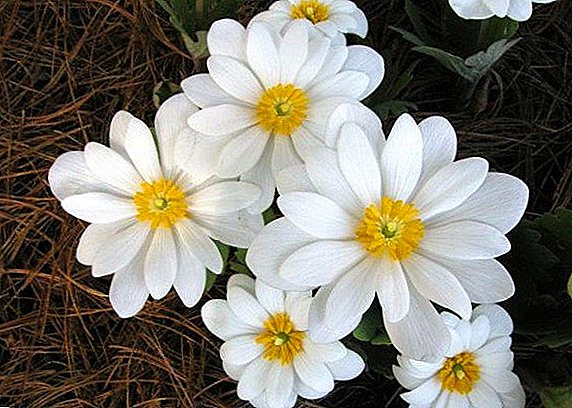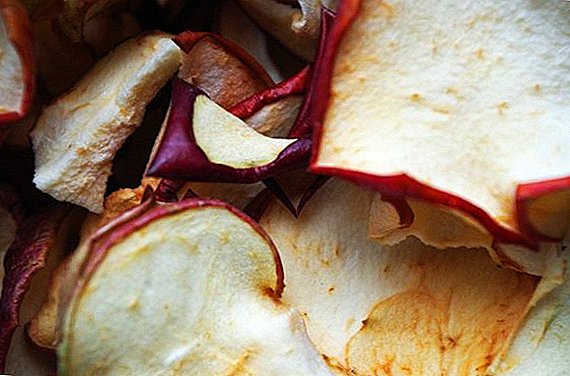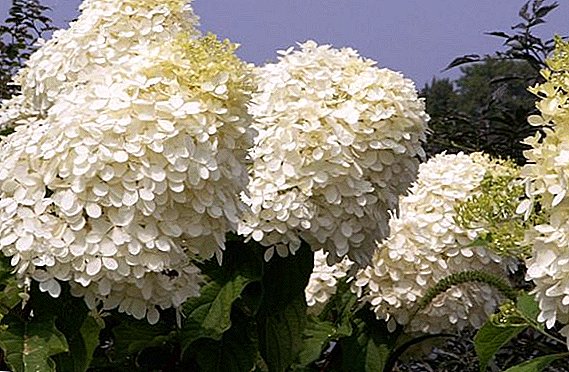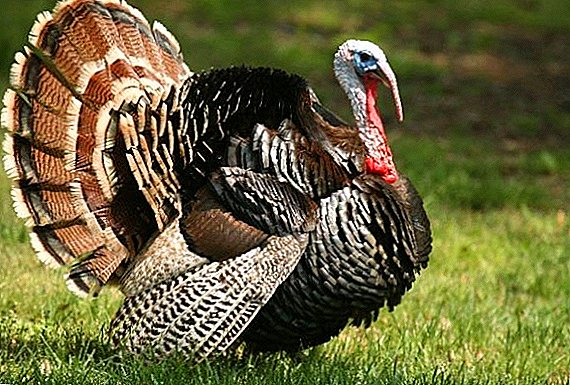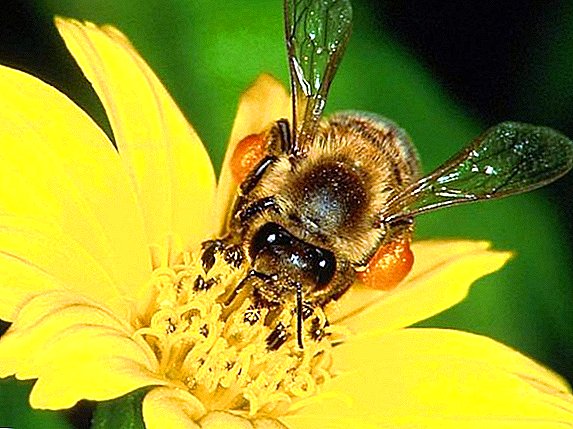 In order to get good volumes of honey, it is very important to have a large amount of honey grass near the apiary. If there are none, you can help nature and additionally engage in the cultivation of plants that are capable of producing a lot of pollen and nectar. In this article we will provide a list of the best honey plants, adding to his photo with the names.
In order to get good volumes of honey, it is very important to have a large amount of honey grass near the apiary. If there are none, you can help nature and additionally engage in the cultivation of plants that are capable of producing a lot of pollen and nectar. In this article we will provide a list of the best honey plants, adding to his photo with the names.
Trees and shrubs
Trees and bushes that are high-quality honey plants include the following:
- Linden. This is a very popular honey plant, which is distributed everywhere. The period of its flowering begins in July. Honey collection is quite large, it can reach 1 ton per 1 hectare of plantings.
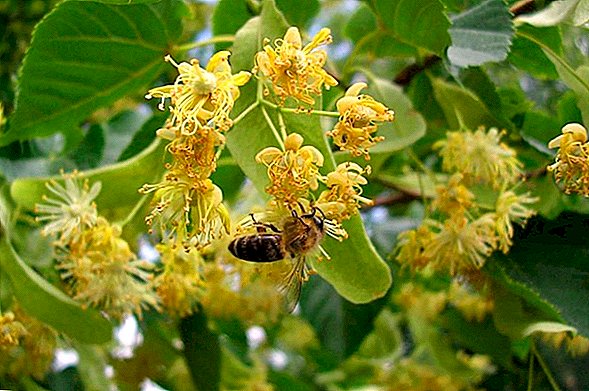
- Pear. The tree belongs to the garden. Beautiful honey plant and pollen. Flowering usually occurs in May. It is characterized by relatively low productivity, within 10 kg per 1 ha of pure plantings.
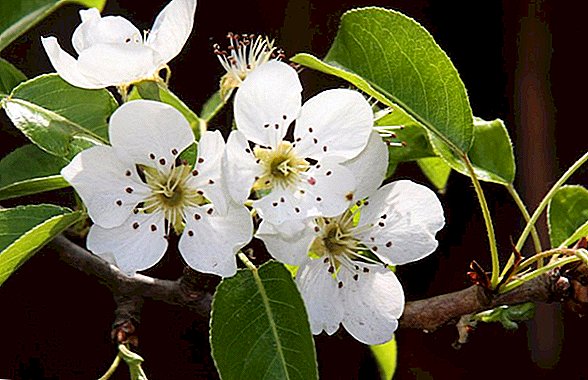
- Willow. It is considered one of the most common melliferous. The predominant number of species grows shrubs (willow eared, ashy, trekhtychinkovaya), some - like trees (willow brittle, white). Willow loves wet terrain, grows well near water. This plant belongs to the early spring flowering. Productivity can vary between 10-150 kg / ha.
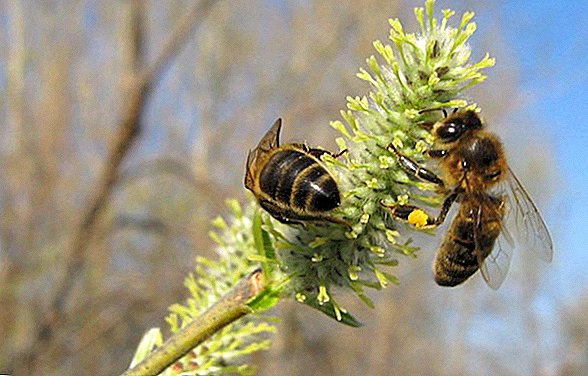
- Cherry. This is a garden tree that grows in almost every garden. The beginning of flowering falls on the first half of May. The productivity of the honey collection can be about 30 kg per 1 ha.

- Buckthorn brittle. It grows like a small tree or as a shrub. The flowering period begins from the beginning of summer and lasts until its end. High-quality honey can be collected in the framework of 20 kg per 1 ha.
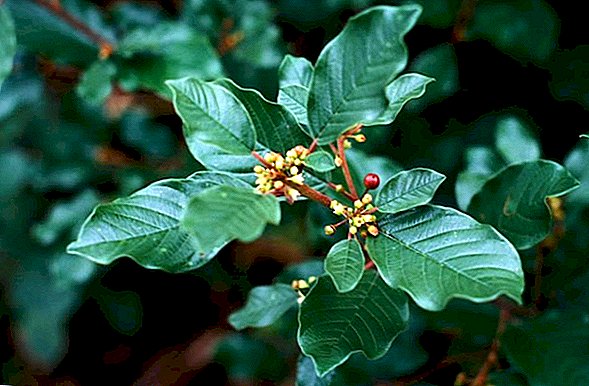
- Viburnum. This is a wild plant. Usually grows in the form of a shrub, in rare cases - in the form of a small tree. It is very widespread, since it has no special requirements for climate conditions. The first color can be seen in early June. The productivity of this honey plant is 20 kg / ha.
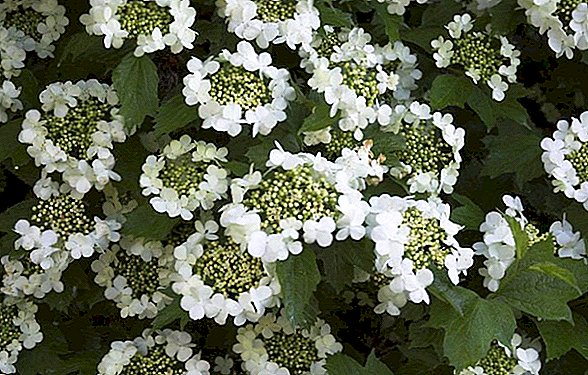
- Forest raspberry. It is a very valuable and healing honey plant. Remarkably grows in forests, especially in log cabins and glades. It blooms in June. Up to 100 kg of delicious honey can be harvested from 1 ha.

- Raspberry garden. As can be understood from the name, such raspberries are growing on private plots. It has the appearance of a shrub. The flowering period covers almost the entire June. It is a very good honey container, since 200 kg of sweet product can be collected from 1 ha.
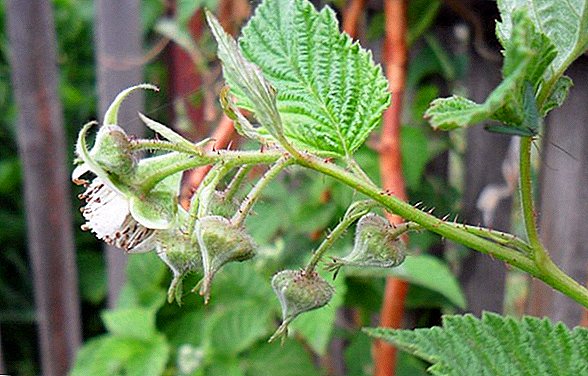
- Common Hazel It is not easy to call it a melliferous plant, since quite a few nectar is secreted by this plant. Flowering begins in early spring, when the snow has not completely melted. Beautiful pollen. It is thanks to hazel bee in the spring actively replenish their stocks.
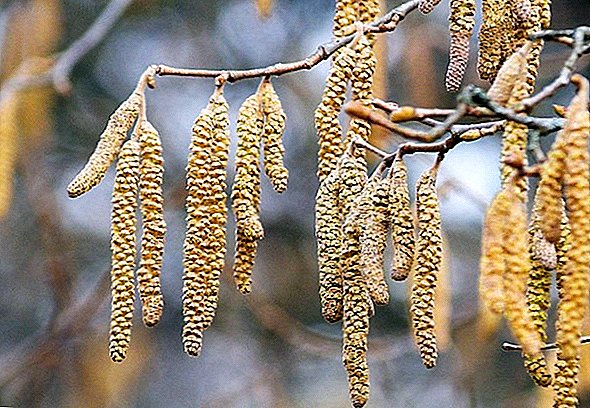
- Rowan. This low tree grows both in the forest and in parks. Often grows in household plots. Blooms in late spring. You can collect a sweet product up to 40 kg per hectare.
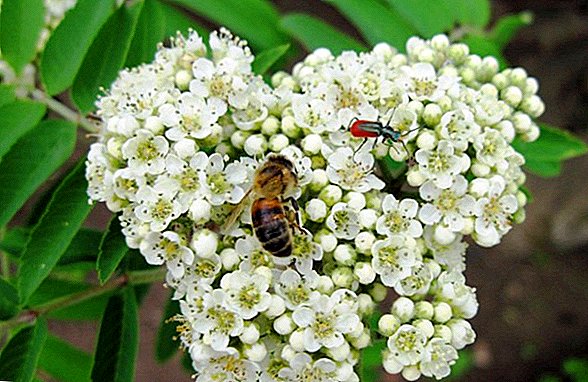
- Plum. It is a garden tree that can give bribes in the amount of more than 40 kg per hectare. The period of productivity begins in May and lasts about 10 days.

- Black currant. This bush can be found in almost all suburban areas. It blooms for long, usually in May. Productivity - 50 kg per 1 ha.
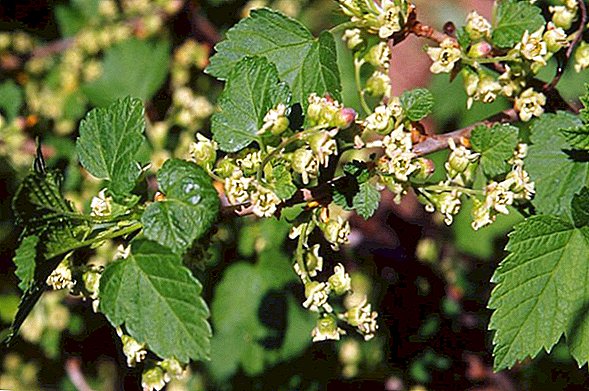
- Blueberries Bush honey plant small. Grows in mixed and coniferous forests. Begins to bloom in late May. If plantations have a high density, then up to 80 kg of honey can be collected from 1 ha.

- Apple tree. This is a common honey plant tree. The period of productivity begins in May and lasts until the end of June. Relatively little honey can be harvested from 1 hectare of clean plantations - about 20 kg.

- Thyme. This small shrub grows on poor and wild soils. Loves sunny and open areas. The flowering period occurs in the second half of the summer. Nectar can produce a lot. The bribe can reach 170-200 kg per 1 ha.

- Bird cherry Depending on the species, the bird cherry can grow as a small tree, and a bush. Under comfortable conditions, the flowering period begins at the end of May. Nectar and pollen plant emits a lot. Productivity is about 200 kg / ha.

Did you know? In ancient Rome, honey could be used as a kind of currency. They could pay for the purchase and even pay a fine.
Herbs and flowers
In addition to trees, there are also many herbs and flowers, which are also wonderful honey plants. The most common honey plants are:
- Autumn Kulbaba. This plant grows everywhere. Often it is confused with dandelion ordinary. Color from July to early September. Productivity is usually in the range of 80 kg / ha.
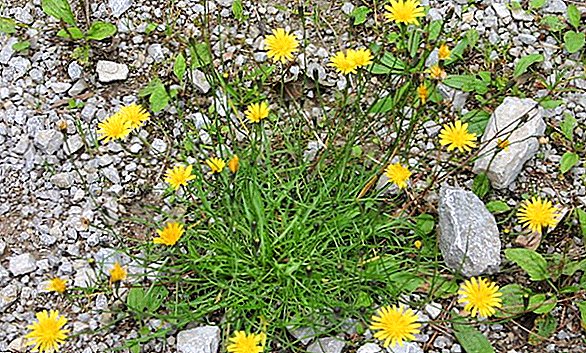
- Coltsfoot. This flower belongs to the early honey plants. Productivity is relatively low, usually keeping within 30 kg / ha. However, the coltsfoot is very valuable, as it has a number of medicinal properties, and also releases pollen in addition to nectar.
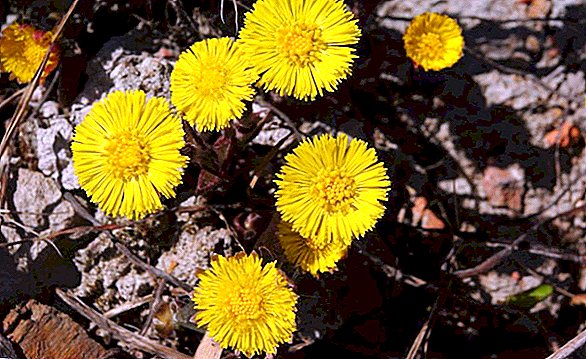
- Dandelion officinalis. It can rightly be attributed to the most common plants on the planet. Flowering begins in early June. It is characterized by a small medosbor, but rather long. The average productivity is 50 kg per 1 ha.
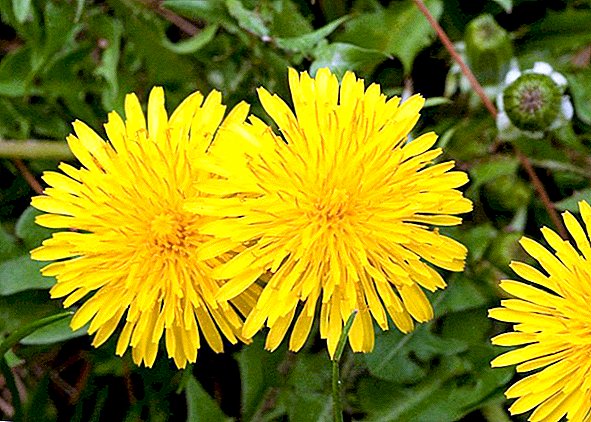
- Chernogolovka ordinary. She loves wet soils. Flowering period from June to September. Bribes can reach 120 kilograms per hectare.

- Mint. She loves to grow around water or on wet soils. Actively blooms from June to September. With favorable conditions, bribes can be very large - up to 1.3 tons per hectare.
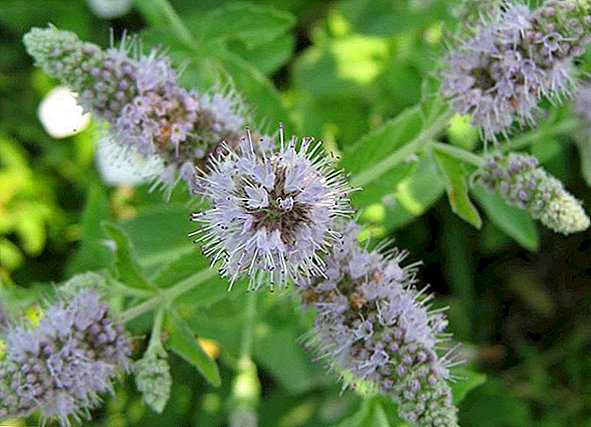
- Birdhouse pineal. Such honey plants grow very well in pristenenny places, they like wet soil. The process of active flowering falls on June-September. The bribes are as big as those of mint - up to 1.3 t / ha.

- Cornflower. This plant is a field, perennial. The bribe is within 110 kg per hectare. Cornflowers bloom from June to September.
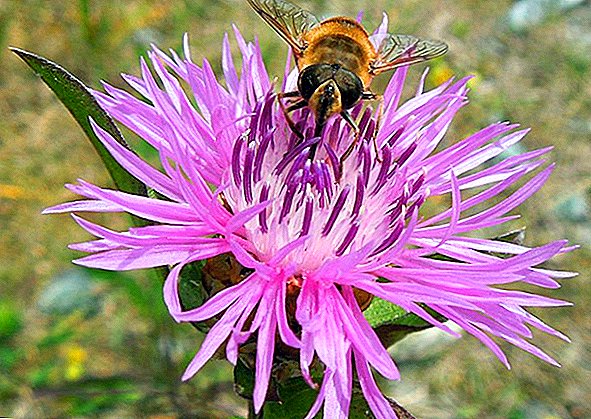
- Clover white. This plant is from the legume family. Loves moist soil. Blooms in May and June. Productivity can be up to 100 kg per hectare.
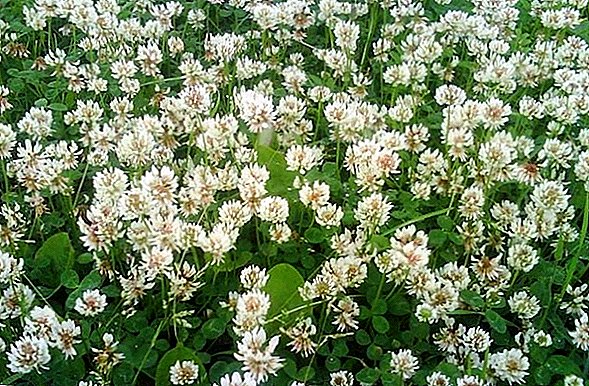
- Medunitsa officinalis. This plant belongs to the early honey plants, as they bloom in April and May. They grow exclusively in deciduous and spruce forests. Productivity can vary between 30-80 kg per hectare.
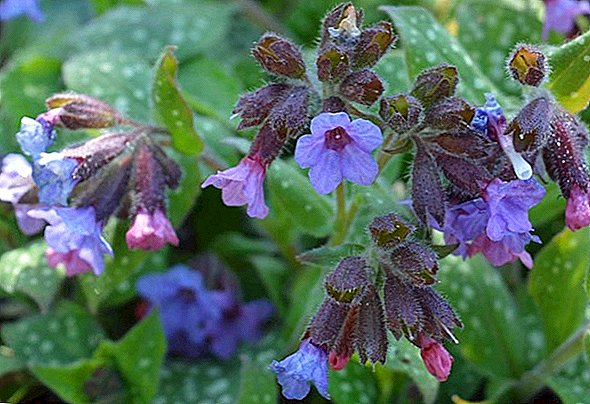
- Peresleska noble. This plant is very common in forests. Blooms in early spring. Nectar produces little, but can produce pollen abundantly.
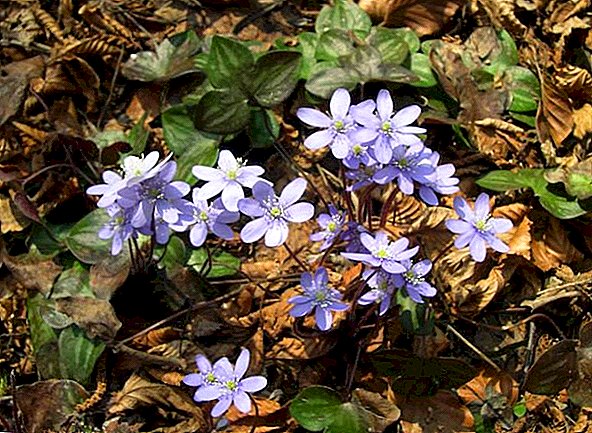
Did you know? A honey sandwich consumed in the morning after the holiday can help relieve discomfort due to a hangover, as it removes alcohol from the body.
Specially planted honey plants
Experienced beekeepers in order to get a good bribe of a sweet product, practice sowing honey plants themselves. So you can pick up those plants that will grow well in the selected area. And in this way you can significantly increase the amount of collected honey.
The best honey plants for bees and popular for self-cultivation are:
- Yellow and white clover. This plant blooms in May and continues to bloom until the end of summer. If you ensure proper planting care, the bush can grow up to 2 m in height. The hue of the flowers depends directly on the type of plant. Almost any type of soil will suit Donnik. He calmly tolerates heat, grows well from seed. Honey from this plant is considered the most valuable, so many beekeepers actively grow it for good reason.
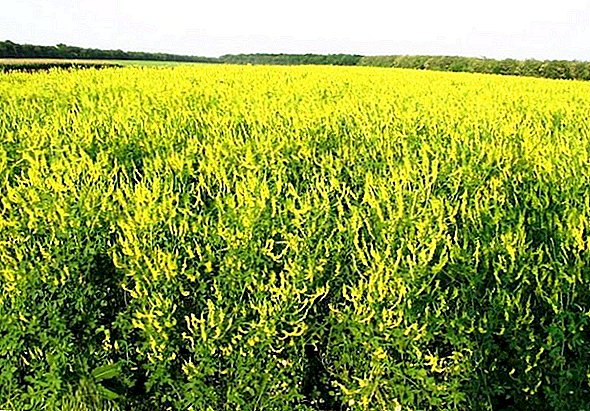 In order to grow yellow or white Donnik independently, it is necessary to carry out the stratification of seeds, this will help the sprouts to break faster. Landing is recommended in early spring or before frost occurs. It is important to guess the time of sowing so that the sprouts have time to break through before the onset of cold weather. The productivity of the honey plant can reach 270 kg of honey per hectare.
In order to grow yellow or white Donnik independently, it is necessary to carry out the stratification of seeds, this will help the sprouts to break faster. Landing is recommended in early spring or before frost occurs. It is important to guess the time of sowing so that the sprouts have time to break through before the onset of cold weather. The productivity of the honey plant can reach 270 kg of honey per hectare.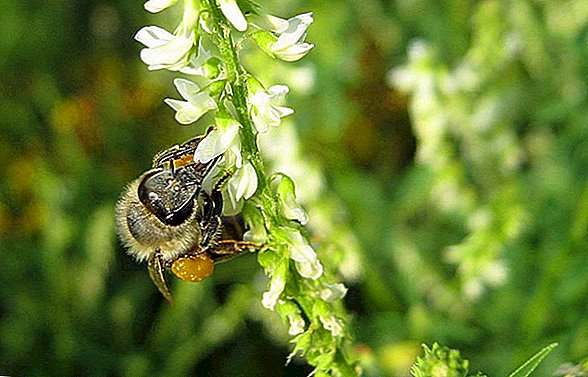
- Clover. For bees, you can grow both pink and white clover. Flowers at first glance may seem inconspicuous, but they are very fond of bees. The plant grows remarkably in the area where many walk. He is not afraid of any rain or temperature drops. The only thing that will be very harmful for clover is the shadow. It is important to ensure good access to the sun. Clover honey has a white color, strong aroma and is also very rich in nutrients. Up to 100 kg of honey can be harvested per hectare planted with clover. Sowing this plant should be carried out in August. For the cultivation of pink clover weave will need 5 kg of seeds per seed, for white - 3 kg of planting material. Seeds can not be planted deeper than 1 cm into the soil. Land after planting should be poured abundantly. The first shoots usually appear literally in two weeks. The flowering period will take all summer, so the beekeeper is very profitable to grow clover.
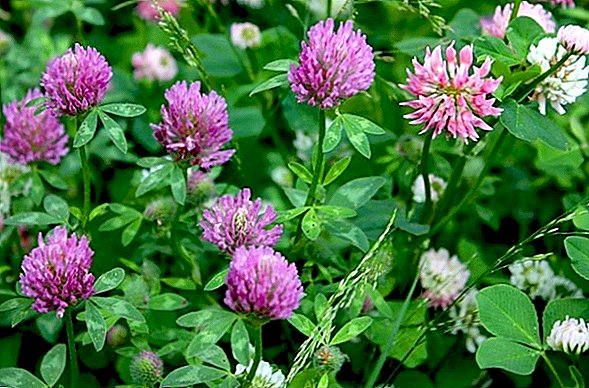
- Hyssop. This plant is originally from Asia. Begins to bloom in July and continues until the end of autumn. Flowers pink or lilac color. To grow it on the plot, you can use seeds or simply divide the bush. It is impossible to dig in the seeds too deep, the maximum depth should be about 0.5 cm, otherwise they simply will not germinate. Landing should be carried out in light soil. Hyssop unpretentious to the climatic conditions, tolerates cold and lack of moisture.

- Catnip. This plant is also called steppe mint. It blooms in early July and continues until the freezing weather. Bushes are low, about 0.8 m. Bees love this plant very much. Seeds sometimes germinate poorly in the open field, so it is best to use seedlings, after sowing the seeds in containers. Kotovnik likes regular watering and light terrain.

- Lofant. This flower is convenient for beekeepers because it grows beautifully in the same place for 10 years. It can be propagated by seedlings or seeds. The first option is much faster and more convenient. Good growth of the lofant will be promoted by good lighting of the plot, then the bush can grow up to 1.5 m in height. The shrub is also able to withstand cold and short droughts, but despite this it is necessary to water it and, if possible, cover it from the cold.

- East goatling This is a perennial plant that does not require much attention to itself. On average, grows to 50 cm. The flowering period begins in May. To grow the goatling, the seeds need to be sown in July, so that before the arrival of cold weather, he has managed to develop well. Seeds necessarily need stratification. The productivity of this plant is quite good, you can collect about 200 kg of honey product from 1 ha. At the same time for sowing the same area will need 28 kg of seed.
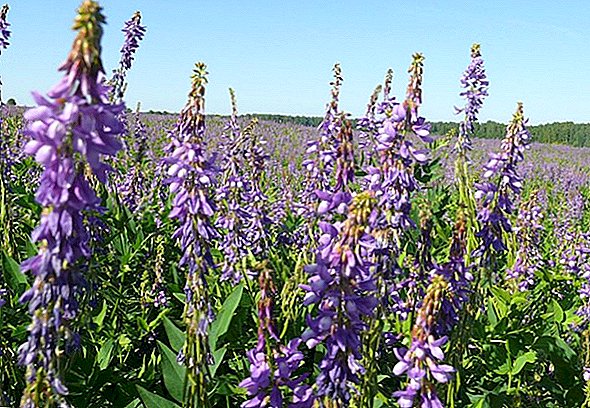
- Bruise ordinary. It is very profitable to engage in the cultivation of this plant. After spending only 6 kg of seed for one hectare, it will be possible to collect about 800 kg of honey later. It is better to sow an ordinary bruise together with some kind of cereal plant. It blooms in the first half of June with small flowers of pink shades.
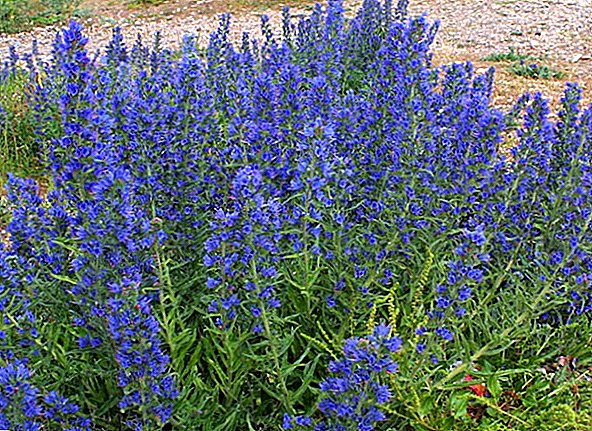
Important! It is best to select plants for planting such that bloom in different periods. So the bees will always have a job, and the beekeeper will have fresh, delicious honey.
- Mordovnik sharogovy. Very productive plant for the beekeeper. With one hectare, you can get about 1 ton of sweet product. This plant is usually planted together with phacelia, so it will be better to take root on the site, and flowering will last longer. Sowing should be carried out in March, then by the summer grow full-fledged bushes. The height of mordovnik reaches 2 m, the flowers are about 4 cm in diameter. The flowering period falls in the middle of summer. Honey from mordovnika of a light shade with a pleasant smell, and also possesses the whole complex of useful substances.

- Phacelia The plant in its content is very undemanding. It is well going through the winter. Can give up to 600 kg of honey per hectare of area. If sowing is carried out in early October, the first flowers will appear in May. Seed material is placed in the soil to a depth of about 2 cm, then the first shoots will appear in a month.
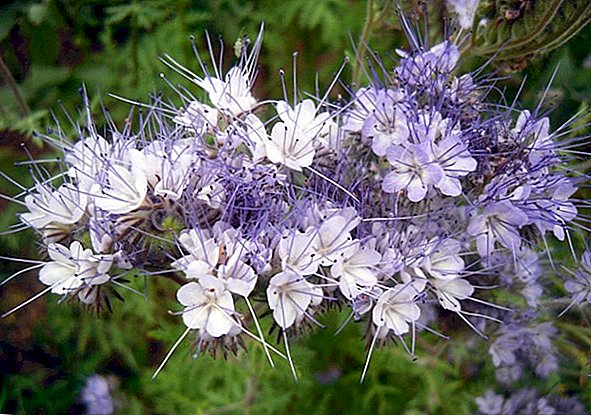
- Melissa. The aroma of this plant is very attracted to bees. The period of flowering of lemon balm begins either in July or in August and then lasts for several months. Honey collected from lemon balm is very tasty and has a pleasant aroma. On average, the height of one plant is 90 cm.

Did you know? Beekeepers sometimes rub hives with dried melissa. This is done so that the bees calm down and actively return home.
- Cucumber herb. It is also called ogrechnik or borage. To taste, this herb resembles a cucumber, it is even added to the first cold dishes and salads. On average, plant height reaches 80 cm. It will be good to grow on any soil, but more like moist black soil. Flowering period - from July to autumn. Beekeepers sometimes cut off those flowers that have faded, then in a few weeks new ones may appear in their place. Productivity: about 1 kg of honey can be harvested from 1 ha. The following year, the borage grass can multiply self-sowing, but it will be already undersized.
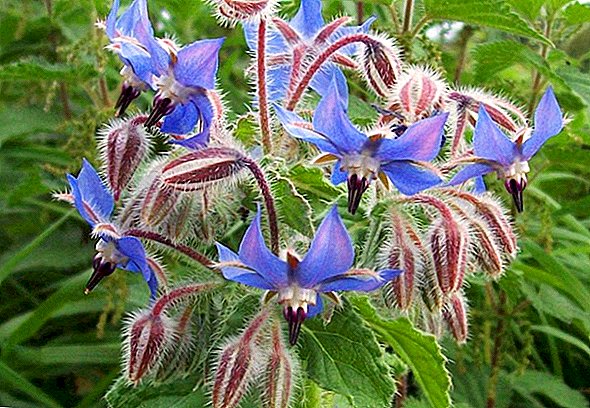
- Dyagil. This plant can grow up to 2.5 m. Loves open, sunny terrain and highly nutritious soil. From one hectare of the site you can collect a sufficiently large amount of sweet product. The plant requires regular and moderate watering, then their aroma becomes more attractive to bees. Dyagil is not afraid of frost, so there is no need to cover it. Without losing its quality, he is well going through the winter.
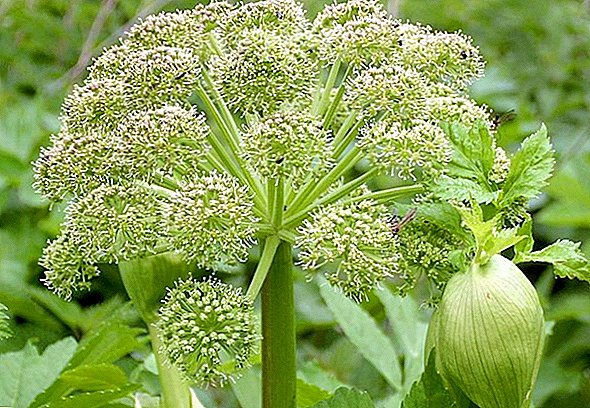
- Goldenrod. Well grown from seed. If sowing is done in spring, the first sprouts will be visible in a couple of weeks. It grows up to 1 m in height, the flowers have a yellow color and are collected in small buds. Goldenrod can grow on any type of soil.
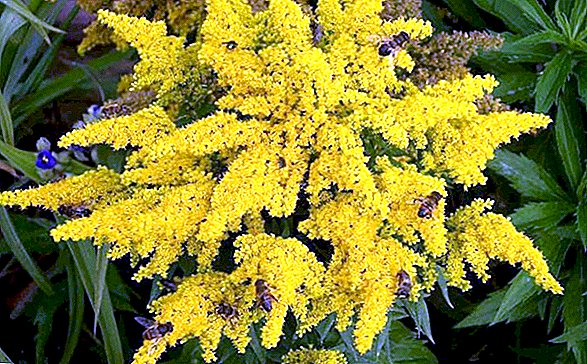
- Sainfoin. The plant can grow up to 70 cm in height. Flowers are collected in a brush and have a purple color. Propagation of sainfoin is best by seed, carrying out planting immediately after the arrival of spring. The seeds themselves resemble beans. They need to be planted at a depth of 3 cm and very well watered. The soil needs nourishing, lighting - the maximum possible. Also, this plant should be regularly watered. An area of 1 ha can give about 300 kg of honey.
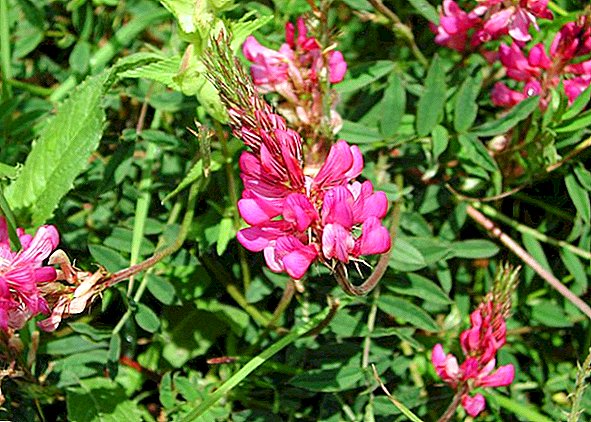
- Safflower. The plant will grow well in the place where any cereal crops used to grow. The soil needs nourishing. You can grow from seed, sowing should be carried out in early spring. Safflower has a relatively short flowering period, so honey can be a little rare.
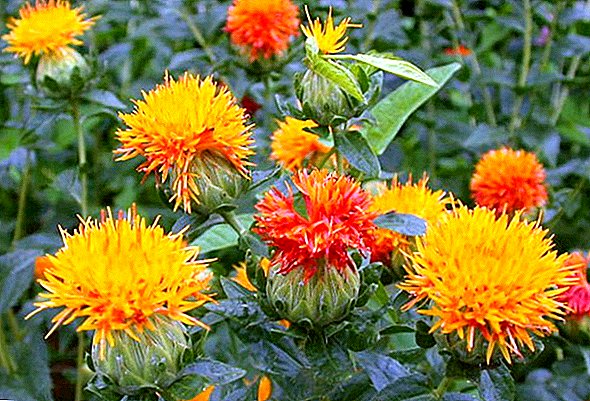
Important! It is best to combine safflower with other honey plants to get a good amount of harvested honey.
Secrets of beekeepers: how to get a continuous flowering of honey plants
It is known that honey plants are interesting for bees only during the period when they bloom. Accordingly, it is very important to ensure that the flowering of such plants is continuous.
Experienced beekeepers recommend for this purpose, first of all, to examine which wild plants already exist on the site and in the immediate vicinity (honey bees can fly quite far), as well as find out when they bloom. Based on the information received, it will be possible to additionally conduct the sowing of those honey plants, the flowering period of which will alternate.
It is necessary to compile your calendar of the honey conveyor for each locality separately. After all, it should be based on climatic and weather conditions. It is necessary to choose the most active nectar carriers for cultivation, those that will grow well in a particular area.




























 In order to grow yellow or white Donnik independently, it is necessary to carry out the stratification of seeds, this will help the sprouts to break faster. Landing is recommended in early spring or before frost occurs. It is important to guess the time of sowing so that the sprouts have time to break through before the onset of cold weather. The productivity of the honey plant can reach 270 kg of honey per hectare.
In order to grow yellow or white Donnik independently, it is necessary to carry out the stratification of seeds, this will help the sprouts to break faster. Landing is recommended in early spring or before frost occurs. It is important to guess the time of sowing so that the sprouts have time to break through before the onset of cold weather. The productivity of the honey plant can reach 270 kg of honey per hectare.














